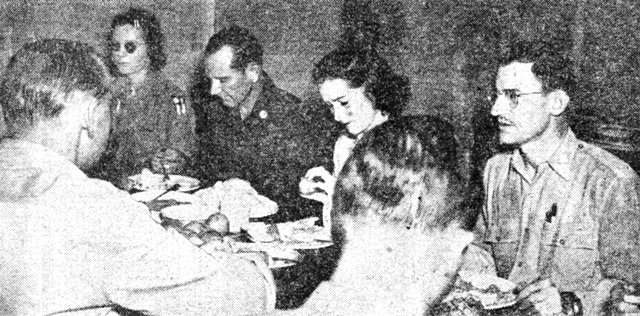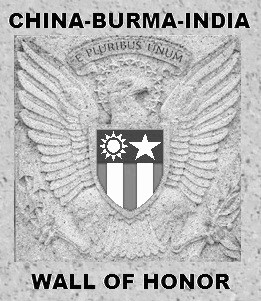|
|
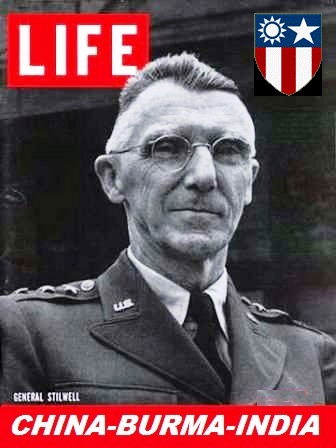
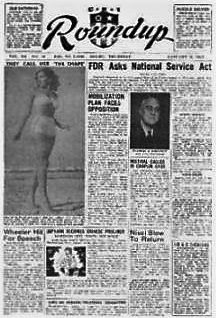
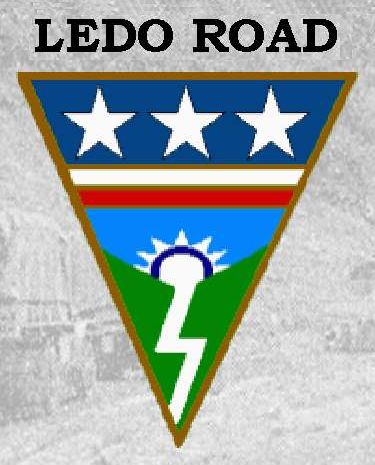

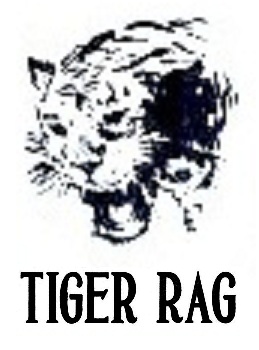
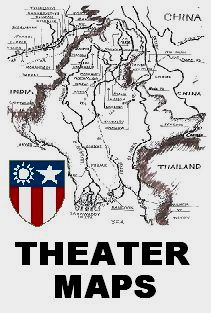
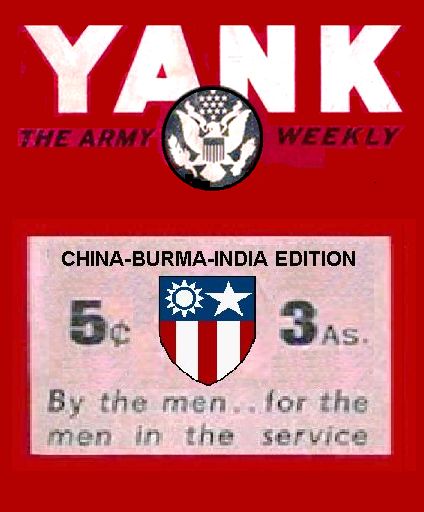
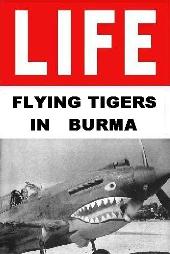
|
|
|
Click on the images below to view these recently added or updated pages . . . 







|

|
|
THANKSGIVING DINNER CAUGHT THE HARD WAY
By CORP. KARL PETERSON — CBI Roundup — Vol.1 No.13 — December 10, 1942 Back where 1st Sgt. Romaine Christie comes from, Thanksgiving means poultry on the table, so when the local beanshooters made with the canned stew on the day of feasting, he and S/Sgt. Shelby (Where's My Transfusion) Scott, disappeared quietly into the brush, to return later with sundry startled-looking chickens and no questions asked. Followed blood, feathers, hot water, stoking of fires behind the bamboo basha, and at last chicken roasting on sharp sticks over a crackling blaze. The first sample of "living off the land" so pleased the boys that next afternoon found them stalking a small white goat for fricasseeing purposes. The hunt broke up when the kid made a dash for it, the ensuing clamor aroused the local Indians to register an emphatic "Nai, sahib," and Corp. Al Sorrentino sorrowfully laid down his ax, lamenting "And I was gonna plant it right between his horns."
T/Sgt. French O. Cox, Heaven's gift to ruined radio sets, was gone last week and in his place was Warrant Officer (Junior grade) Cox, as uncomfortable a looking gent as ever sat self-consciously for the first time at the officers' mess table. His old buddies, who don't see but one Warrant Officer per coon's age, were undecided whether he should be properly addressed as "sir," "Mr. Cox," "Good old Coxie," or "Junior," but there was no doubt about the congratulations extended by all. The most stripe-happy set of characters in all India today are the cooks, bearers, sweepers et al, employed at a bungalow in the vicinity. The officers resident therein outfitted their crew with G.I. flight caps and khaki blouses carrying an assortment of bright chevrons. Suma, graying veteran of the domestic staff, is now a First Sergeant with seven "hitches" to his credit, the head cook made Tech, and so on down to the junior boot polisher, aged fourteen, who nailed a Pfc. Heard along the daily grind: Sgt. Bernie Henderson, staggering, empty-pocketed from a rugged poker game in "Shebangi No. 1." "Call me Christian, they just made a believer out of me." Corp. "Jeeter" Revelle: "They ought to turn Jap prisoners over to those Army dentists; when those men finish with 'em - what they ain't told, they don't know." |
Type a word or phrase below to search this site . . . |
|
|
|
Officially established 22 June 1942, the China-Burma-India Theater (CBI) is often referred to as The Forgotten Theater of World War II. Of the 12,300,000 Americans under arms at the height of World War II mobilization, only about 250,000 (two percent) were assigned to the CBI Theater, making CBI Veterans are Unique more than just a slogan. Initially important to the Allied war effort because of plans to invade Japan from the Chinese mainland, it became mainly an effort to keep China supplied and in the war. Allied forces, mostly British, Chinese, and Indian, engaged large numbers of Japanese troops that might have otherwise been used elsewhere. The less than 3,000 volunteer soldiers who became famous as Merrill's Marauders, and the units of the Mars Task Force, were the only dedicated U.S. ground fighting forces in the Theater. America's role in CBI was to support China by providing war materials and the manpower to get it to where it was needed. The majority of Americans in CBI worked to bring lend-lease supplies to China. The Flying Tigers fought the Japanese in the air over China and Burma. Army Air Forces flew supplies Over The Hump from India to China. Merrill's Marauders and the Mars Task Force fought through the jungles of Burma. Army Engineers built the Ledo Road to open up a land supply route. |
|
|
|
About this site
Ding Hao (Chinese - very good, the best), Teek Hai (Hindi - ok, everything is alright). Welcome to cbi-theater.com, officially "China-Burma-India - Remembering the Forgotten Theater of World War II." This unique site focuses on the China-Burma-India Theater of World War II (CBI) and serves to remember an often forgotten theater of the war. More about the theater is in the History Summary above. There are several specific areas featured including CBI Publications, Yank-The Army Weekly newspaper, U.S. Army Pocket Guides and local government booklets; Stories and photos from CBI veterans and their families, Unit Histories, the Ledo Road, Pipelines, LIFE magazine articles and photos, and miscellaneous other CBI topics A history of CBI people and places told in various ways. An extensive look at the building of the Ledo Road is included as well as stories of the Hump route over the Himalayas over which Army Air Force transports carried supplies to the Chinese. Pipelines that paralleled the road carried fuel for trucks and planes. Veterans or their families have shared photos and stories, from a simple paragraph and a few photos, to a complete personal service history and photo album. Most of the content, in fact, has come from ordinary people sharing their stories. More on that below. Among the souvenirs that G.I.'s brought back were soldier newspapers like YANK-The Army Weekly, CBI Roundup, The China Weeky, Hump Express and more. These papers reported war news as well as articles and features to keep the G.I.'s informed and entertained. They contain a wealth of infotmation and have bee re-created to improve readability and provide search capability. As of October 2025, there are 14.4 GB which make up 338 separate sites, each its own subject. There is much more to explore here at cbi-theater.com, just point and click! |
|
Share Your CBI Memorabilia
Most of these sites were created using World War II era publications and printed material from CBI. Some of the material was provided by people like you. Your CBI story, photos and other memorabilia is of interest to veterans and friends of CBI and is an important part of history. This history can be preserved and published to the Internet so that anyone interested can readily access information about the CBI Theater. You don't have to part with your piece of CBI history as good photocopies or scans are acceptable. If you have photos or memorabilia from CBI and would like to share it and your story with veterans and others interested in CBI, please click below to send an e-mail. |
|
Women in CBI
Dear Family and Friends of CBI Theater Veterans, My name is Kathy Stearman, and I am currently writing a nonfiction book about the American women who served in the China-Burma-India (CBI) Theater during World War II. My focus will be on several women from the Women's Army Corps (WACs), the Army Nurse Corps, the Red Cross and other American organizations such as the Office of Strategic Services (OSS) and the United Services Organizations (USO.) I have lived and worked in both India and China and became intrigued by the fact that veterans of the CBI Theater are not as acknowledged as they should be. Therefore, I would like to bring to light the stories of those women who were courageous and resolute in their decision to serve their country. If you are a family member of a woman who served in the CBI Theater, or if you know of a woman who served there, I respectfully ask if you would be willing to reach out to me at Kathy@KathyStearman.com. We can set up an initial telephone conversation or a video conference, whichever is preferred. Thank you so much for assisting me in writing this very important, but almost forgotten, time in our history. |
On the CBI Wall of Honor the men and women who served in the China-Burma-India Theater are remembered and honored. Their photograph, unit or area of service, and their wartime hometown are shown. The photo is also a link to more information on their service (when available). To honor your relative or other CBI veteran, use the link below to submit an Army portrait photo or similar and include their full name, unit or area, and wartime hometown. |
DEDICATED TO THE MEN AND WOMEN OF THE CHINA-BURMA-INDIA THEATER
|
|
Visitors
Since October 31, 2004
Copyright © 2003-2025 Carl Warren Weidenburner


